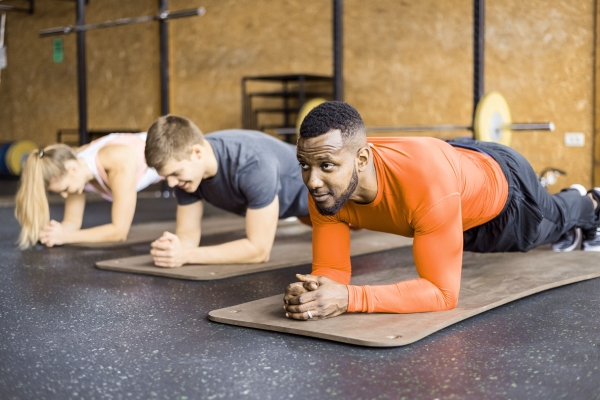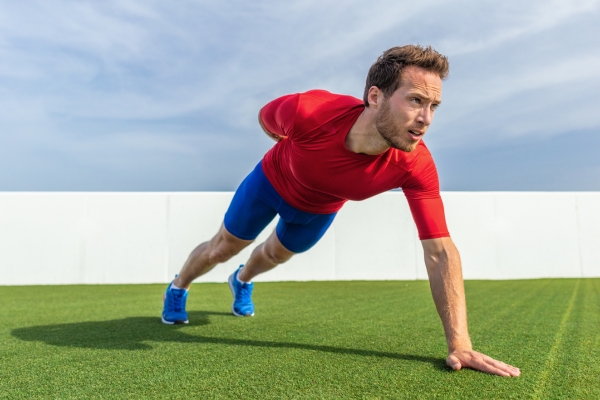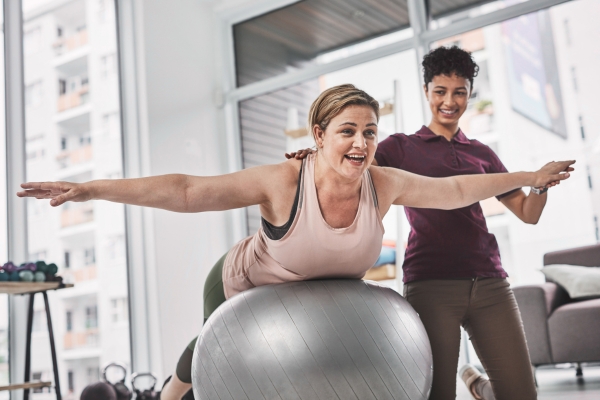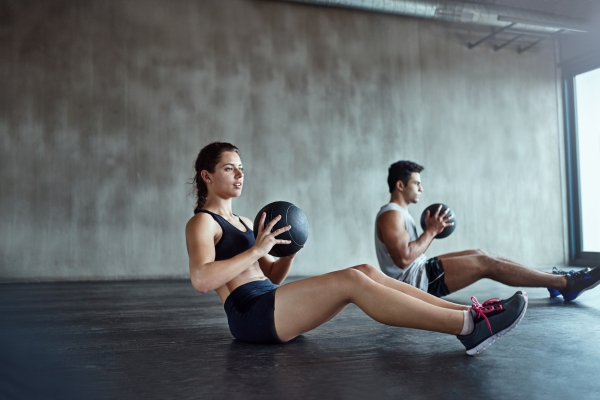Introduction: Why Core Physio Matters for Active Bodies
For athletes in Melbourne, staying injury-free is just as important as building speed or strength. Many turn to core physio not just for recovery but for prevention. Whether you’re a runner, cyclist, swimmer, or weekend footy player, a strong and stable core helps protect against overuse injuries and sudden strains.
Core physio addresses more than basic exercises; it helps athletes build deeper control and strength through structured movement, often guided by trained physiotherapists. Those investing time in injury prevention physiotherapy are finding that not only do they train harder, but they also recover faster and avoid long layoffs.
We’ll look at how core physio Melbourne services such as Go Run Go Physio support athletes by focusing on function, form, and core stability.
Understanding the Core: More Than Just Abs

The “core” refers to a group of muscles working together to stabilise the spine, pelvis, and shoulder girdle. It’s not just about six-pack abs.
Key components of the core include:
- Deep abdominal muscles (transverse abdominis)
- Pelvic floor
- Diaphragm
- Multifidus and spinal stabilisers
- Glutes and hip muscles
These muscle groups act as a central support system. Without proper strength and coordination, athletes may unknowingly overload joints and soft tissues elsewhere in the body, a common cause of sports-related injury.
Physiotherapy for athletes Melbourne often includes assessments that identify imbalances or weaknesses in these regions. A well-rounded core physio plan targets these areas through tailored stability work, helping prevent strain and injury during dynamic movement.
Common Sports Injuries and Their Link to Core Weakness
Athletes with poor core stability are more prone to repetitive injuries, particularly in high-impact or rotational sports.
Frequent issues linked to weak core control:
- Lower back pain
- Groin strains
- Hamstring tears
- ITB syndrome
- Patellofemoral knee pain
- Shoulder impingement
- Achilles tendinopathy
For example, runners lacking core endurance often experience poor pelvic control, which affects foot strike and knee alignment, contributing to overuse injuries. Similarly, footballers or tennis players who twist, sprint, and land frequently rely on strong trunk muscles for safe force transfer.
By addressing core deficiencies, Melbourne sports physio clinics help prevent the accumulation of load in vulnerable tissues.
The Role of Core Physio in Injury Prevention
Core physio takes a preventative approach by improving neuromuscular control, balance, and muscle endurance. Instead of simply reacting to injury, physios focus on strengthening the central foundation, reducing injury risk in the first place.
Benefits of core-focused therapy include:
- Improved posture and spinal alignment
- Enhanced load distribution during movement
- Better coordination under fatigue
- Faster response times to unpredictable motion (e.g., slipping, sudden turns)
- Reduced compensatory patterns that lead to overuse injuries
A physiotherapist may start by assessing movement patterns using video analysis or functional tests. From here, they build a plan tailored to each sport and individual need.
Many athletes benefit from core stability training for runners, which often includes dynamic exercises on unstable surfaces, breath control, and progressive load training.
This kind of structured intervention is particularly helpful for younger athletes or those returning from injury, as it reduces the chance of recurrence and promotes safer technique during sport.
How Core Physio Helps Different Types of Athletes

Not all sports stress the body in the same way, and this is where athlete physio near me searches come into play. Melbourne-based physios work closely with:
Runners
- Focus: Pelvic control, stride alignment, glute strength
- Outcome: Reduced shin splints, knee strain, Achilles overload
Cyclists
- Focus: Lumbar stability, scapular control
- Outcome: Improved endurance and reduced lower back tightness
Swimmers
- Focus: Shoulder stabilisation, thoracic mobility
- Outcome: Less impingement, better stroke mechanics
AFL/Footy Players
- Focus: Impact control, hip drive, multidirectional stability
- Outcome: Lower groin and hamstring injuries
Dancers/Gymnasts
- Focus: Core endurance, flexibility under control
- Outcome: Fewer joint sprains and overuse symptoms
Core physio Melbourne practitioners often build routines around sport-specific needs, giving athletes long-term tools to stay on track.
Effective Core Stability Training Techniques

Building a strong core requires more than crunches. These methods used by injury prevention physiotherapy providers are based on control, balance, and progression.
Core physio exercises might include:
- Dead bugs and bird-dog drills
- Glute bridges with resistance
- Pallof presses (anti-rotation control)
- Balance work on wobble boards
- Breath-integrated movements for trunk bracing
- Single-leg stability tasks
Each activity aims to train the core in a functional, sports-relevant way, activating deep stabilisers while performing tasks under load or fatigue.
A progressive program monitored by a physiotherapist ensures safety while building strength and motor control.
Tailored Programs from Melbourne Physios
Each athlete is different. Whether you’re searching for Melbourne sports physio or looking for athlete physio near me, you’ll find that customised programs outperform generic fitness routines.
At Go Run Go Physio, assessments are used to guide programming:
- Posture and alignment review
- Functional movement screens
- Core endurance tests
- Running gait analysis (where relevant)
Based on findings, your physio creates a goal-specific plan. For runners, this might involve treadmill retraining and glute activation. For field athletes, agility drills with core integration are common.
Programs are adjusted weekly or fortnightly to keep progress aligned with real-world sports performance.
When to Seek Help: Warning Signs and Early Interventions
Some athletes wait for an injury before they act. But subtle signs can indicate when core physio may help:
- Recurrent tightness or pain during training
- Poor balance or loss of form late in sessions
- Noticeable fatigue in the hips or trunk
- Past injuries with recurring patterns
- Side dominance or strength imbalance
These signals suggest the body is compensating, often due to poor core support.
Go Run Go Physio encourages athletes to seek support early, ideally during pre-season or following time off from sports. Small corrections in training and posture can prevent a long injury spell.
How Go Run Go Physio Supports Local Athletes
Located in Melbourne, Go Run Go Physio offers sport-specific core training as part of its preventative and rehabilitative services.
Their approach includes:
- Individual consultations and movement assessments
- Custom strength and control programs
- Regular retesting to track improvements
- Integration with running or sport-specific training
Athletes from all backgrounds benefit, whether competing professionally or training for fun. With a focus on practical movement and sustainable strength, the clinic aims to support every athlete’s long-term goals.
Searches for core physio Melbourne often lead to Go Run Go Physio because of their attention to quality care and tailored support.
FAQs
Q1. What is core physio and how is it different from general physiotherapy?
Answer: Core physio focuses on strengthening the body’s central support system, mainly the deep abdominal, spinal, and pelvic muscles, to prevent injury and support athletic performance.
Q2. Who should consider core physio?
Answer: Any athlete prone to injury, returning from a break, or looking to improve control and endurance can benefit from core-focused physiotherapy.
Q3. How long does it take to see results from core stability training?
Answer: With consistency, many notice improvements in posture and performance within 4–6 weeks. Long-term results depend on regular practice and professional guidance.
Q4. Can core physio help with back pain?
Answer: Yes, poor core function is a major factor in many lower back problems. Strengthening the area often leads to better spinal support and reduced symptoms.
Q5. Is this only for elite athletes?
Answer: No. Anyone active, including recreational runners or gym-goers, can benefit from injury prevention strategies focused on core control.
Q6. Do I need equipment at home?
Answer: Many exercises can be done using body weight. Some routines may involve resistance bands, balance cushions or physio balls. Your physio will guide you based on what’s available.
Q7. Where can I find core physio near me in Melbourne?
Answer: Go Run Go Physio provides tailored services for athletes across Melbourne, helping clients build injury-resistant foundations through expert-led care.
Conclusion
Building a resilient and responsive core is one of the most effective ways athletes can prevent injury, improve performance and recover faster. Whether you’re training for a marathon or enjoying a casual weekend run, the role of the core should not be underestimated.
With guidance from experienced physiotherapists, such as those at Go Run Go Physio, athletes in Melbourne can build a program that meets their sport’s demands. Investing in core physio is not just about fixing what’s broken it’s about preparing the body for the demands ahead.

